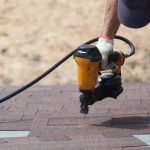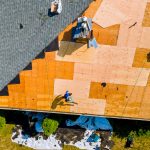
In Wisconsin, most roofs last between 20 and 50 years, meaning replacement is usually needed only once or twice in a homeowner’s lifetime, though this timeline can vary depending on the material and other factors.
The main factors that determine replacement frequency include:
- Wisconsin’s Extreme Weather Cycles
- Installation Quality Impact on Longevity
- Maintenance History and Material Decisions
Wisconsin homeowners face unique challenges with heavy snow loads, ice dams, and frequent temperature fluctuations that can shorten a roof’s expected lifespan. These conditions create stress on your home’s primary protection system, leading to issues like missing shingles, leaks, and structural damage.
Waiting too long to address these problems can result in extensive interior damage, mold growth, and costly emergency repairs.
Our metal roofing in Wisconsin experts provide durable solutions designed to withstand our state’s challenging climate.
How Long Different Roof Types Last in Wisconsin
Wisconsin’s climate significantly impacts roofing material longevity compared to national averages, as detailed in our guide on how long does a roof last in Wisconsin. These weather extremes often reduce the expected lifespan of most materials by 10–20%.
- Asphalt shingles: 15–30 years in Wisconsin conditions, with architectural shingles lasting longer than three-tab varieties. Certain types can last up to 50 years if properly installed and maintained, though frequent freeze–thaw cycles may cause cracking and granule loss.
- Metal roofing: 40–70 years with proper installation and maintenance. In some cases, metal and slate roofs have the potential to last well over 100 years with proper care, and metal performs especially well in Wisconsin by shedding snow and resisting ice dam formation.
- Tile roofing: 50-100 years when properly maintained, though the weight requires adequate structural support for Wisconsin snow loads. Clay and concrete tiles handle freeze-thaw cycles better than many other materials.
- Wood shingles: 15-30 years, depending on species and treatment. Cedar performs best in Wisconsin, but requires regular maintenance to prevent moisture damage and extend longevity.
With our local knowledge and commitment to craftsmanship, we deliver durable, energy-efficient, and visually appealing roofing upgrades that stand the test of time. We can also advise if you are wondering whether to replace your roof before selling your home.
Signs Your Wisconsin Roof Needs Replacement
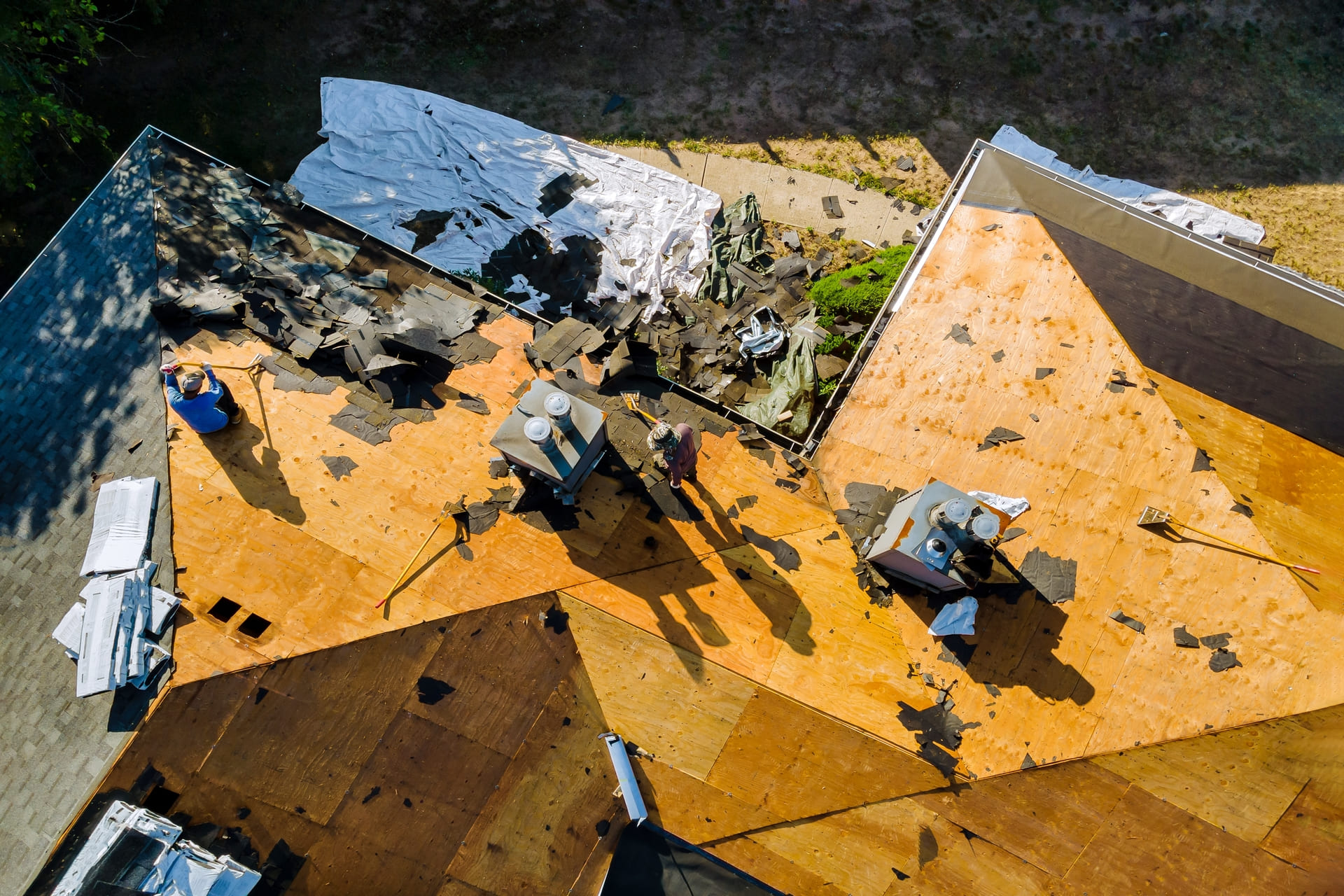
Understanding the best time to replace a roof helps you recognize when it’s nearing the end of its lifespan, allowing you to plan, prevent emergencies, avoid costly damage, and protect your investment.
Wisconsin homeowners should watch for these specific indicators that take into account our state’s challenging weather patterns.
💡 Hypothetical scenario: Imagine a Madison homeowner who notices several loose shingles after a spring storm. At first, it may seem like a quick repair is enough, but with an asphalt roof already over 20 years old, these issues point to a system nearing the end of its lifespan. Wisconsin’s harsh freeze–thaw cycles accelerate wear, causing granule loss, cracking, and hidden weaknesses that leave the home vulnerable to leaks and UV damage.
Over time, the warning signs pile up—multiple repair calls within a couple of years, higher energy bills from poor insulation, and even sagging areas that suggest structural strain. Add in repeated storm damage from hail, high winds, and ice, and it becomes clear that replacement is more cost-effective than patchwork repairs, protecting both the home’s safety and the homeowner’s budget.
If you’re unsure whether your roof needs repairs or a full replacement, contact us today and our team will help you decide the best option for your home.
UPGRADE YOUR ROOF WITH CONFIDENCE
Protect your home with durable, high-quality roofing from Prairie Exteriors. Trusted and reliable solutions.
Factors That Determine Replacement Frequency
Understanding the specific factors that affect your roof’s lifespan helps you make informed decisions about timing and budgeting for replacement.
1. Wisconsin’s Extreme Weather Cycles
Our state experiences some of the most dramatic temperature swings in the nation, with winter lows reaching -30°F and summer highs exceeding 90°F. These extreme weather conditions create constant expansion and contraction cycles that stress roofing materials beyond their design limits.
Across the state, Wisconsin averages around 44 severe weather events annually, spanning severe storms, flooding, and winter weather, with dozens of thunderstorm-related warnings issued each year. This frequency of severe weather means your roof endures more stress in Wisconsin than similar materials would experience in more stable climates.
The freeze-thaw cycles that occur throughout winter and spring cause particular damage to shingles and flashing. Water penetrates small cracks, freezes, expands, and creates larger openings that allow more moisture infiltration – a cycle that can quickly destroy roofing materials.
2. Installation Quality Impact on Longevity
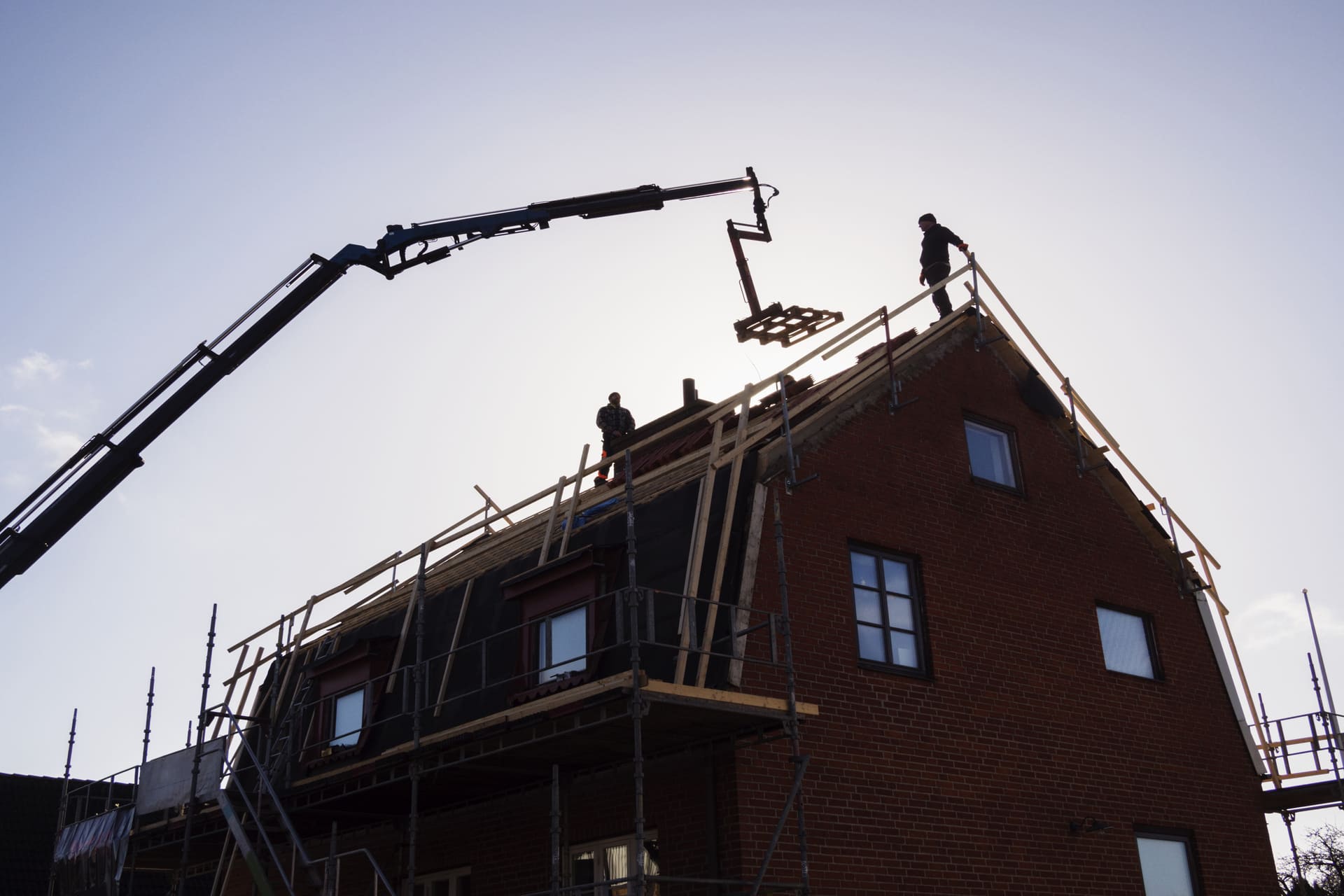
Proper installation significantly extends your roof’s life, while poor workmanship can reduce even premium materials to half their expected lifespan. Wisconsin’s challenging conditions demand skilled installation that accounts for snow loads, ice dam prevention, and proper ventilation.
A professionally installed roof includes features like ice and water shields in vulnerable areas, proper flashing around penetrations, and adequate ventilation systems. These details become critical when your roof must handle 40+ pounds per square foot of snow load and repeated freeze-thaw cycles.
Expert installation also ensures that materials are rated for Wisconsin’s climate zone and installed according to manufacturer specifications that account for our weather patterns. This attention to detail makes the difference between a 20-year roof and one that lasts 30+ years.
3. Maintenance History and Material Decisions
Regular maintenance can extend your roof’s lifespan by 5-10 years, while neglect accelerates deterioration. Wisconsin homeowners who maintain clean gutters, remove ice dams promptly, and address minor issues before they become major problems see significantly longer roof life.
The quality of materials used during installation affects how well your roof withstands Wisconsin’s climate challenges. Premium materials with enhanced warranties often prove more cost-effective over time, especially when you factor in the extended lifespan they provide under harsh conditions.
Cost-Benefit Analysis: When to Replace vs Repair
Deciding between repair and replacement requires careful analysis of current condition, remaining lifespan, and long-term costs. Smart homeowners consider the total investment over time rather than just immediate expenses.
| Factor | Repair | Replace |
| Age of roof | Under 15 years | Over 20 years |
| Damage extent | Localized areas | Multiple areas affected |
| Cost threshold | Under 30% of replacement cost | Over 50% of replacement cost |
| Energy efficiency | Minor impact | Significant improvement opportunity |
| Warranty coverage | Limited to repair area | Full system warranty |
| Future maintenance | Ongoing issues likely | Minimal for 15-20 years |
💡 Hypothetical scenario: Imagine a Sun Prairie homeowner with a 25-year-old roof facing $8,000 in repairs compared to a $25,000 full replacement. While repairs may seem cheaper at first, the roof would likely need replacing within the next few years, making the total investment higher than replacing now.
In another case, a Middleton homeowner found that replacing their old roof improved energy efficiency by about 15%, lowering heating bills by roughly $200 a year. Over a 25-year lifespan, that’s around $5,000 in savings—helping offset the cost of replacement.
📌 In general, when repairs approach half the cost of a new roof and your roof is 20 years or older, replacement usually provides better long-term value and peace of mind.
Best Times of Year for Roof Replacement in Wisconsin
Timing your roof replacement strategically can save money, ensure better installation conditions, and provide optimal protection when you need it most. Wisconsin’s distinct seasons create clear windows of opportunity for this major home improvement project.
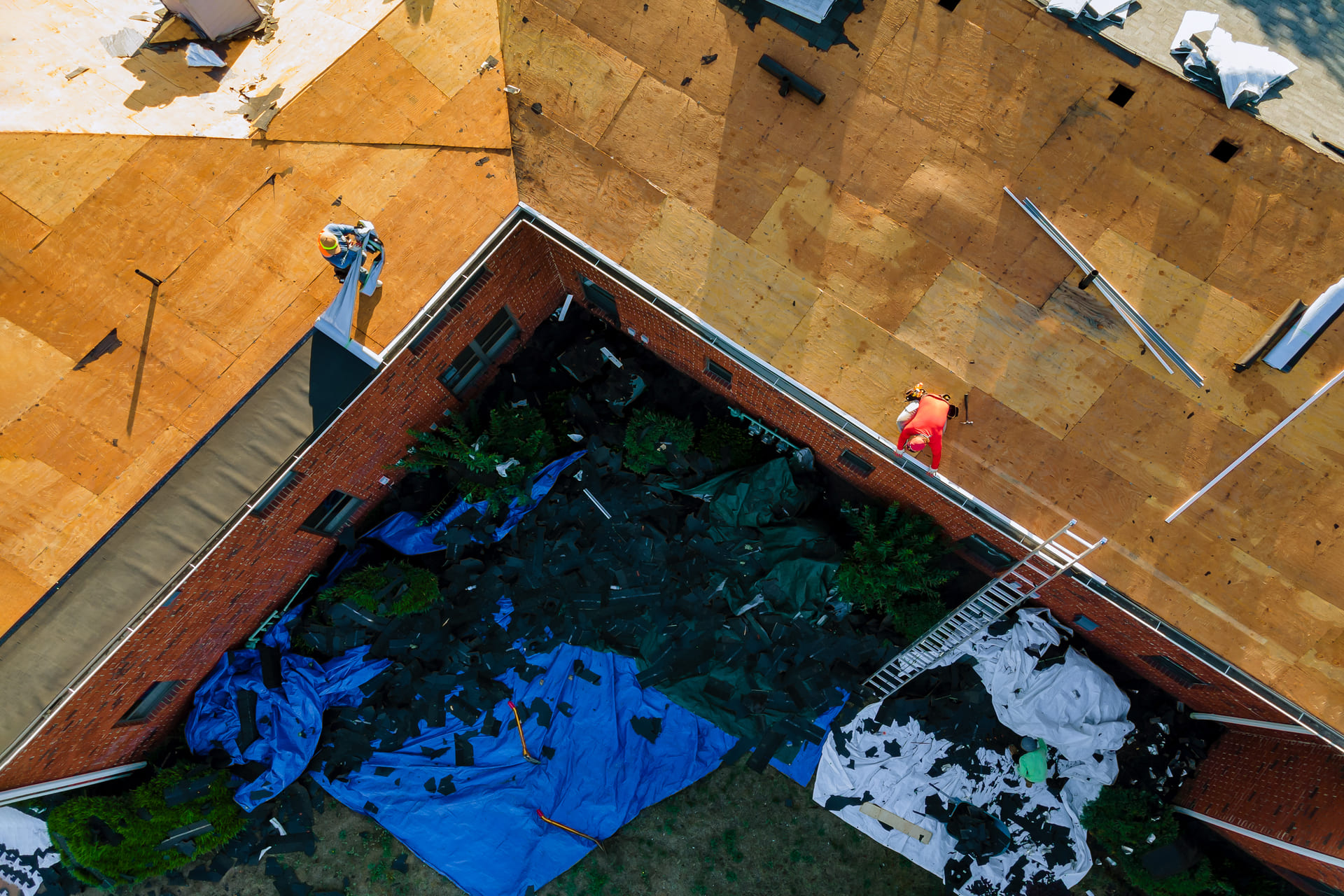
- Late spring (May-June) offers the ideal combination of mild temperatures and lower contractor demand than peak summer months. Materials perform better during installation, and workers can maintain consistent quality without weather delays.
- Early summer (July-August) provides the most predictable weather conditions, though expect higher costs due to peak demand. This timing works well if you need immediate replacement due to storm damage or emergency situations.
- Early fall (September-October) presents another excellent window with stable weather and motivated contractors preparing for winter downtime. You’ll often find better pricing as demand decreases after summer peak season.
- Winter limitations (November-April) make replacement challenging due to snow, ice, and extreme cold. Emergency repairs are possible, but full replacement should wait for better conditions unless absolutely necessary.
Transform your home with shingle roof installation in Wisconsin services that deliver lasting protection and enhanced curb appeal.
How to Extend Your Roof’s Lifespan
Proactive maintenance significantly impacts how often you’ll need replacement, potentially adding 5-10 years to your roof’s useful life. Wisconsin homeowners who follow these practices consistently see better performance and fewer emergency repairs.
- Regular professional inspections – Schedule annual inspections and additional checks after severe weather events. Professional eyes spot potential problems before they become costly repairs.
- Prompt repair of minor issues – Address loose or damaged shingles, flashing problems, and small leaks immediately. Minor repairs cost hundreds, while major ones cost thousands.
- Gutter maintenance – Keep gutters clean and properly aligned to prevent ice dams and water backup. Clogged gutters are a leading cause of premature roof failure in Wisconsin.
- Snow load management – Remove excessive snow accumulation using proper techniques or professional services. Heavy snow loads can exceed your roof’s structural capacity.
- Ventilation system maintenance – Ensure adequate airflow to prevent ice dam formation and reduce moisture buildup that can cause rot and mold issues.
- Tree management – Trim overhanging branches that can damage shingles during storms or drop debris that clogs gutters and creates moisture problems.
💡 A professional roof inspection is the best way to assess your roof’s condition and determine if replacement is necessary.
Insurance Considerations for Roof Replacement Timing
Understanding how insurance coverage intersects with replacement timing can significantly affect your out-of-pocket costs. Wisconsin homeowners should be aware of specific coverage limitations and optimal claim timing strategies.
Most homeowner’s policies cover sudden damage from storms, hail, or other severe weather events, but exclude gradual deterioration from normal aging. This distinction is crucial when deciding whether to file a claim or pay for replacement privately.
Insurers also depreciate roof value over time. For example, a 20-year-old asphalt roof might only receive about 50% reimbursement under an actual cash value (ACV) policy. By contrast, a replacement cost coverage (RCC) policy can cover the full cost of replacement if the damage is from a covered event.
📌 Filing claims for legitimate minor damage early in your roof’s life can help establish a documented damage history that supports future claims. However, too many claims in a short period may raise premiums or even risk non-renewal, so balancing timing with necessity is important.
Wisconsin’s Office of the Commissioner of Insurance notes that most policies require prompt notice of loss, often within days or weeks. Even if you aren’t ready to begin repairs immediately, reporting damage quickly preserves your claim rights while allowing time for a full assessment.
Finally, consider timing your replacement to align with valid insurance claims when possible, but never attempt to exaggerate or misrepresent damage. Insurance fraud not only voids coverage but can also result in serious legal consequences.
Planning Your Wisconsin Roof Replacement
Strategic planning ensures your replacement project proceeds smoothly and delivers optimal results. Wisconsin homeowners should begin this process well before emergency replacement becomes necessary.
- Professional inspection scheduling – Arrange comprehensive inspections 2-3 years before your expected replacement timeline. This gives you time to budget and plan without pressure from emergencies.
- Material selection and research – Compare options based on Wisconsin climate performance, not just initial cost. Consider factors like snow shedding ability, ice dam resistance, and wind ratings for our severe weather conditions.
- Contractor vetting and selection – Research local contractors with specific Wisconsin experience and proper licensing. Check references, insurance coverage, and manufacturer certifications before making your final decision.
- Financing and budgeting preparation – Explore financing options early, including home equity loans, contractor financing, and cash savings plans. Having financing arranged prevents delays when you’re ready to proceed.
- Seasonal timing coordination – Schedule your project during optimal weather windows, typically late spring through early fall. Book early, as the best contractors fill their schedules months in advance.
- Permit and preparation logistics – Understand local permit requirements and prepare your property for construction. This includes protecting landscaping, moving vehicles, and coordinating with neighbors about temporary disruptions.
Reach Out For Professional Roofing Advice
Prairie Exteriors & Painting is more than just a contracting company—it’s the result of years of experience, superior workmanship, and a dedication to enhancing both the durability and beauty of Wisconsin homes. We know that a well-built, well-maintained roof is essential to protecting your home and extending its lifespan.
Don’t wait until emergency replacement becomes your only option. Our team is here to help you make informed decisions about the best time to replace your roof, ensuring maximum value from your investment.
Ensure your roof is ready for Wisconsin’s toughest weather—contact us online or call +1 608-370-2528 today.
HIGH-QUALITY
ROOF REPLACEMENT
YOU CAN RELY ON
Choose Prairie Exteriors for durable, dependable asphalt roofing solutions designed to stand the test of time.
FAQs
How do I know if my roof damage is covered by insurance?
Insurance typically covers sudden damage from storms, hail, or wind, but excludes gradual wear and normal aging. Document damage immediately with photos and contact your insurance company within days of discovery, even if you’re unsure about coverage eligibility.
Can I replace just part of my roof if only one section is damaged?
Partial replacement is possible but often creates problems with mismatched materials and uneven aging. When your roof is approaching 15-20 years old, it’s usually more cost-effective to consider replacing the entire system for consistent protection and warranty coverage.
What warranty coverage should I expect with roof replacement?
Professional roof installations typically include manufacturer material warranties ranging from 20 to 50 years, depending on the materials chosen, plus workmanship warranties from your contractor. Premium materials and certified installers often provide enhanced warranty options that cover both materials and installation defects.
How can I prepare my home for roof replacement?
Clear the area around your home of vehicles, outdoor furniture, and valuable items that could be damaged by falling debris. Cover plants and landscaping near the house, and remove items from walls inside your home, as vibrations from construction can cause hanging pictures to fall.
What financing options are available for roof replacement?
Many Wisconsin homeowners use home equity loans, contractor financing programs, or personal loans to fund roof replacement. Some contractors offer zero-interest financing for qualified buyers, while others provide payment plans that spread costs over 12-60 months, depending on project size.



